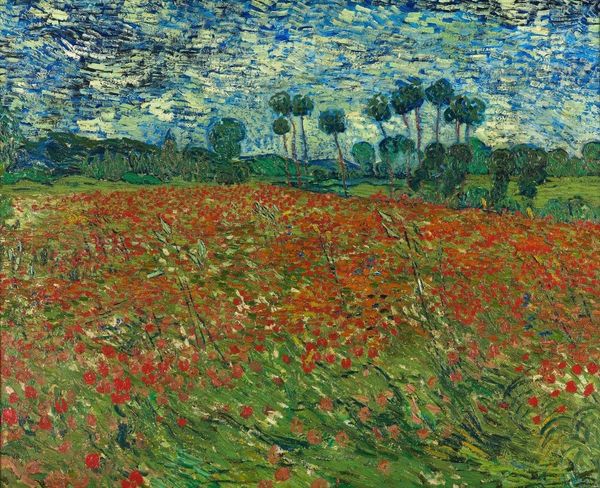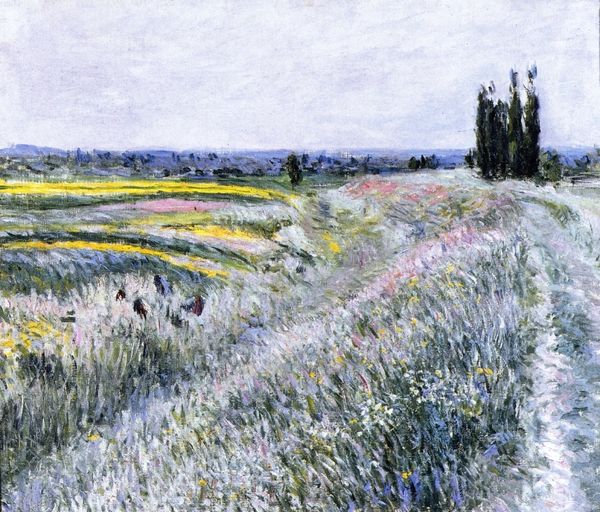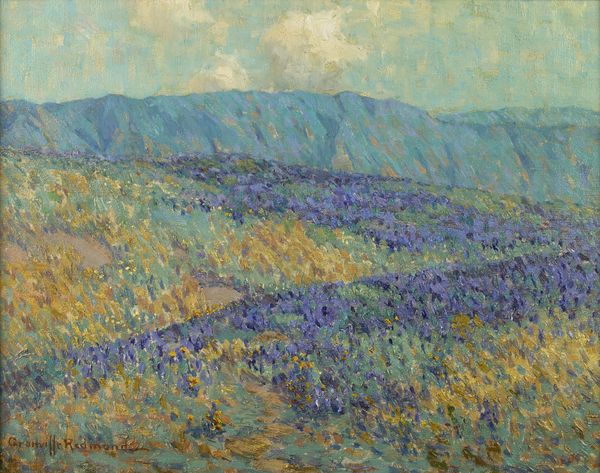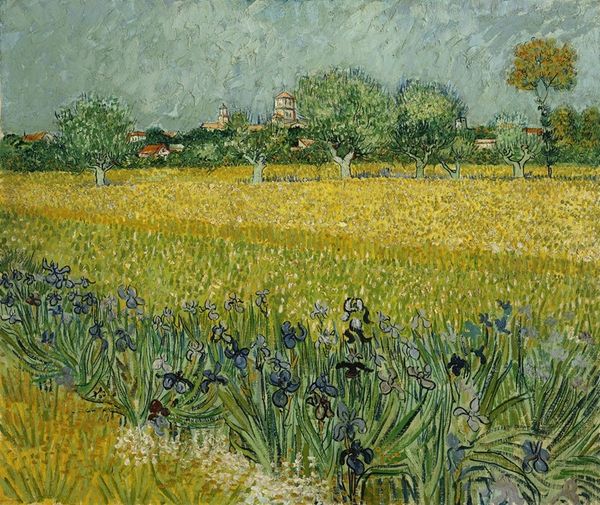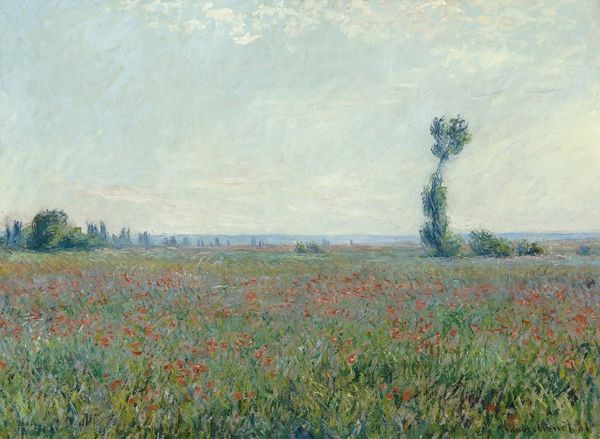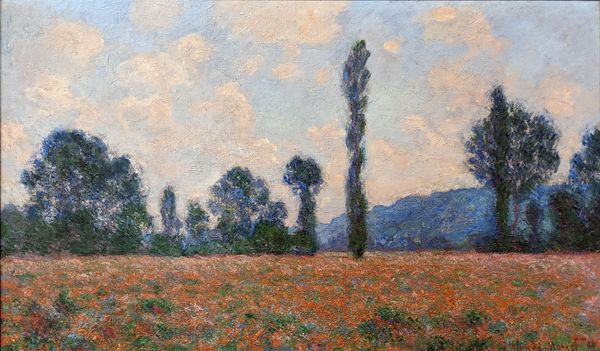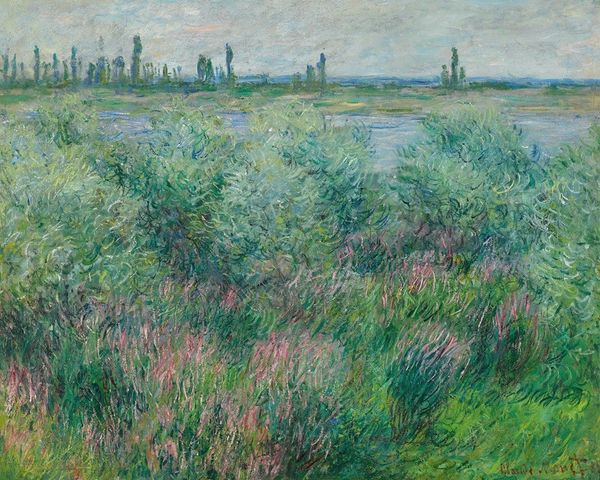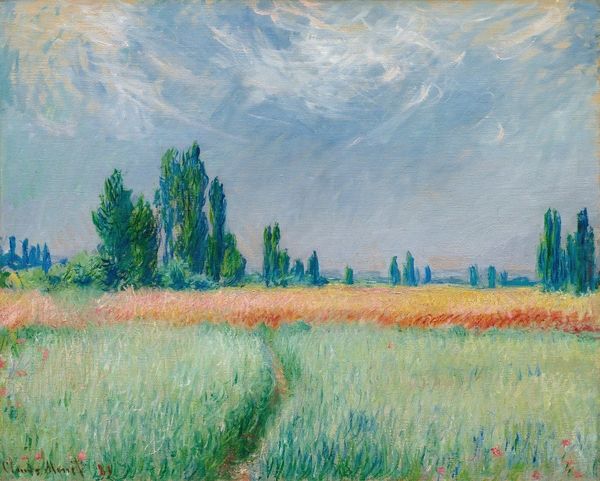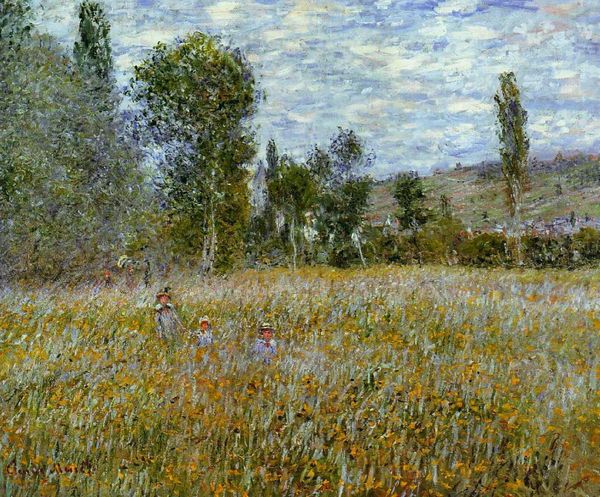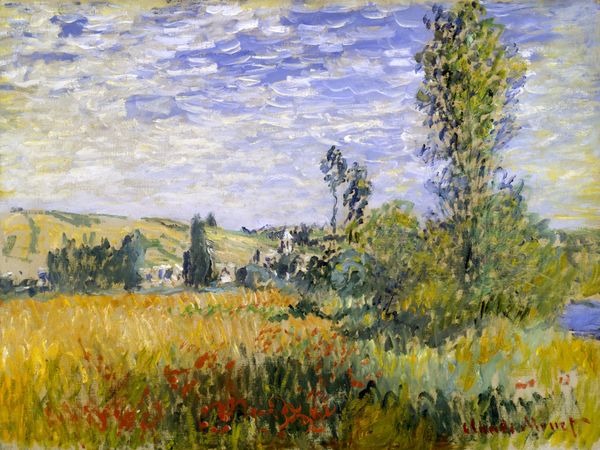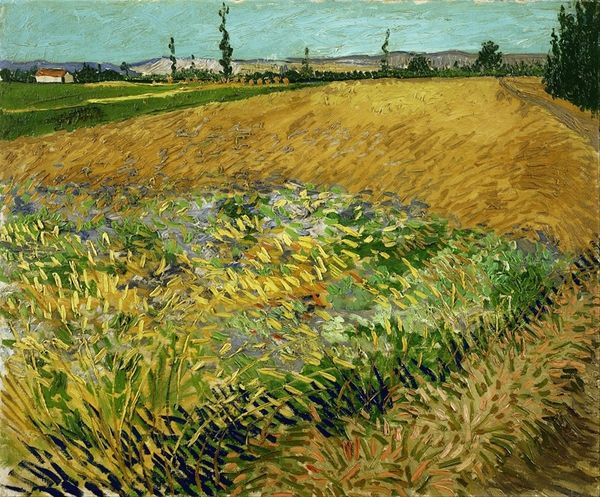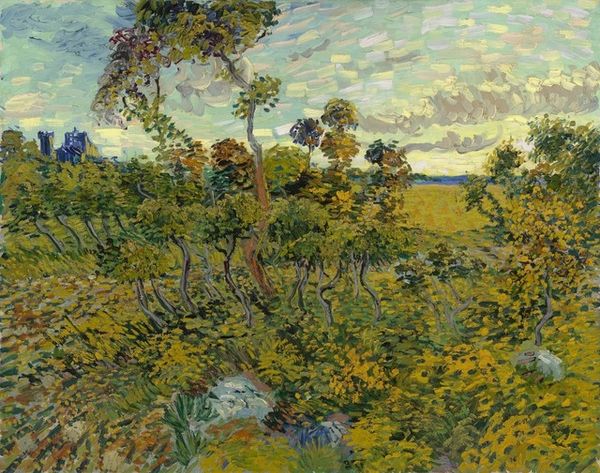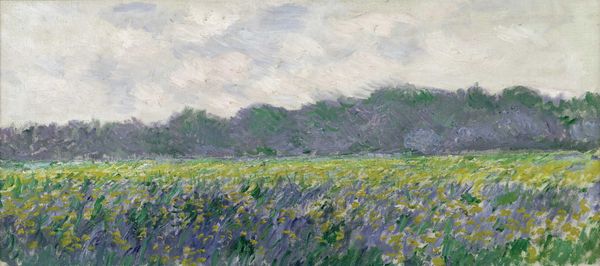
painting, plein-air, oil-paint
#
painting
#
impressionism
#
plein-air
#
oil-paint
#
landscape
#
oil painting
#
realism
Copyright: Public Domain: Artvee
Editor: This is Claude Monet’s "Poppy Field in a Hollow near Giverny," painted in 1885 using oil paints. It feels incredibly serene to me; almost dreamlike in its haziness. What historical context might inform this kind of imagery? Curator: Consider Monet's radical move to painting en plein air. It wasn't merely a stylistic choice. Think about the late 19th century – a time of burgeoning industrialization. Painting directly in nature offered a counterpoint, a visual retreat from increasingly urban and industrialized life. Do you see that in this painting, a sense of escaping the contemporary pressures? Editor: Definitely! It feels almost like a statement about finding peace in nature, pushing back against industrialization’s relentless march. But how was this “retreat” perceived at the time, institutionally? Curator: The art world wasn't uniformly receptive. Academic art institutions prized highly finished studio works with historical or mythological subjects. Monet’s blurry poppies, painted quickly in a field, challenged those norms, didn't it? His Impressionism reflected changing social values, elevating the individual's sensory experience over established artistic doctrines. Did these works start to attract the interest of public audiences? Editor: Absolutely! So it was a dialogue then: institutions clinging to traditional values versus artists reflecting new social experiences and desires of public audiences. I hadn’t thought of it that way. Curator: Precisely. Monet didn't just paint pretty pictures. He participated in a significant cultural shift, redefining art's role in a rapidly changing world. Editor: Thanks for your perspective on art and the political background around it!
Comments
No comments
Be the first to comment and join the conversation on the ultimate creative platform.
